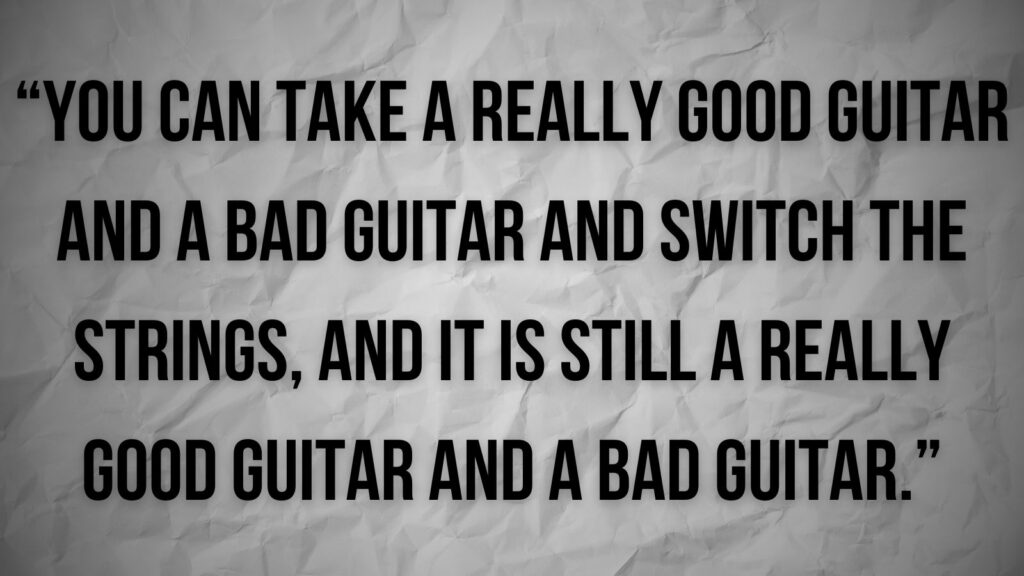There seems to be a very simple way to figure out which guitar is “good” or “bad,” at least according to Paul Reed Smith.
The legendary guitar builder and the owner of PRS Guitars has some very firm stances when it comes to guitar and guitar quality. To Paul, for instance, the body and neck wood is one of the most important components of the sonic equation, and he’s been very vocal about it.
On top of that, Paul is also very certain about one thing that differentiates between a good and a bad guitar. In a recently shared footage of last year’s clinic over at CosmoFEST, the legendary guitar maker said that there’s one simple way to tell.
“A good guitar will ring for about 45 seconds,” Paul explained (transcript via Music Radar). “A bad guitar rings for about 12 seconds. You can time it with a stopwatch.
To him, the sustain is one of those essential aspects of a great guitar. But this is two-fold in a way — it’s both a thing that sounds great and that proves that the instrument was built well. He continued:
“The guitar is either shutting down a string or allowing it to ring. The string wants to go nuts. You can take a really good guitar and a bad guitar and switch the strings, and it is still a really good guitar and a bad guitar.”
“The string is trying to do its job; the guitar is shutting it down… And the lesser amount that the guitar shuts the string down the better the guitar is.”

Paul also recalled how he was once challenged by an audience member in a similar setting. He said:
“This guy gets up in the middle of the room and goes, ‘All right, hot-shot. We think an old Les Paul is a reissue. We think an old Strat is a reissue. We’ve never played a real one. We don’t know what you’re talking about.'”
That must have been some tough crowd there. And Paul admits that he wasn’t actually prepared for this. But it turned out well for him in the end. He added:
“I broke out in a cold sweat the minute he challenged me because I had never timed my guitar. The old Les Paul rang about 45 seconds. The new one range about 17 seconds. The old Strat rang about 47, 48 seconds. The new one rang about 17 or 18 seconds, and the PRS lasted 48 seconds, so it was okay.”
Well, fortunately, he got away safely there. In case you’re a guitar salesman who’s dealing with a somewhat demanding customer, Paul has an interesting piece of advice for you.
“If they start screaming when you are playing catch with one of the guitars, that’s the one they want,” the guitar builder said. “It’s true! It happened to me.”
Yeah, it sounds wild. But he shared a whole story about that:
“We were in Florida and this guy goes, ‘I just can’t decide if I love this guitar or not.’ And [former PRS sales rep] Jim Greenhill said, ‘Back up, Paul!’ And we started chucking it, and he started screaming; his credit card came out so fast it was unbelievable!”
“Now we’ve done the opposite, we’ve started throwing it, and the person has no reaction whatsoever. They don’t buy it.”
In a recent interview, Paul Reed Smith discussed the core of every guitar’s tone. When asked about it, he explained that things aren’t that simple.
“Look, in a lot of guitars, the nut is made out of the same material you hook your toilet to your septic tank with,” he offered. “Do you think that’s a good idea?”
“I mean, the industry standard in acoustic guitar is bone because those guitar makers have decided that of all the materials that they fussed with, that’s the best one. So it’s a combination of a pile of things.”
“Where the string starts to vibrate — which is the bridge — and ends vibrating — which is the nut — is incredibly important. But this long, A-weighted thing with tuning pegs and frets in different places has an impact.”
“I mean, if you coat the whole guitar with GE clear silicone caulk, it’s not going to vibrate very well, but the internet says it doesn’t matter. I’m bringing it up on purpose because if you exaggerate it… Okay, we’ll have a balsa wood neck and a balsa wood fingerboard that’s only three-eighths of an inch thick, and we’re going to make it a 40-inch scale.”
“Now, do you think that with that long, long neck made out of balsa wood, that guitar is going to have a good acoustic tone? All you have to do is exaggerate it to make the point, but all the things make a difference.”
“And to take the wood drying, the wood selection, and the finishing away from a guitar maker as if it doesn’t matter would be like telling somebody they’re going to make a violin in Cremona, and the woods don’t make any difference, it’s only the microphone that you mike the violin with.”
“I just don’t buy it. I could tell you story after story after story of the internet telling us how to make guitars, and they knew better. But sometimes, they do; mostly, they don’t. It depends. It’s a very complicated equation.”
Photo: chascar (Paul Reed Smith)


